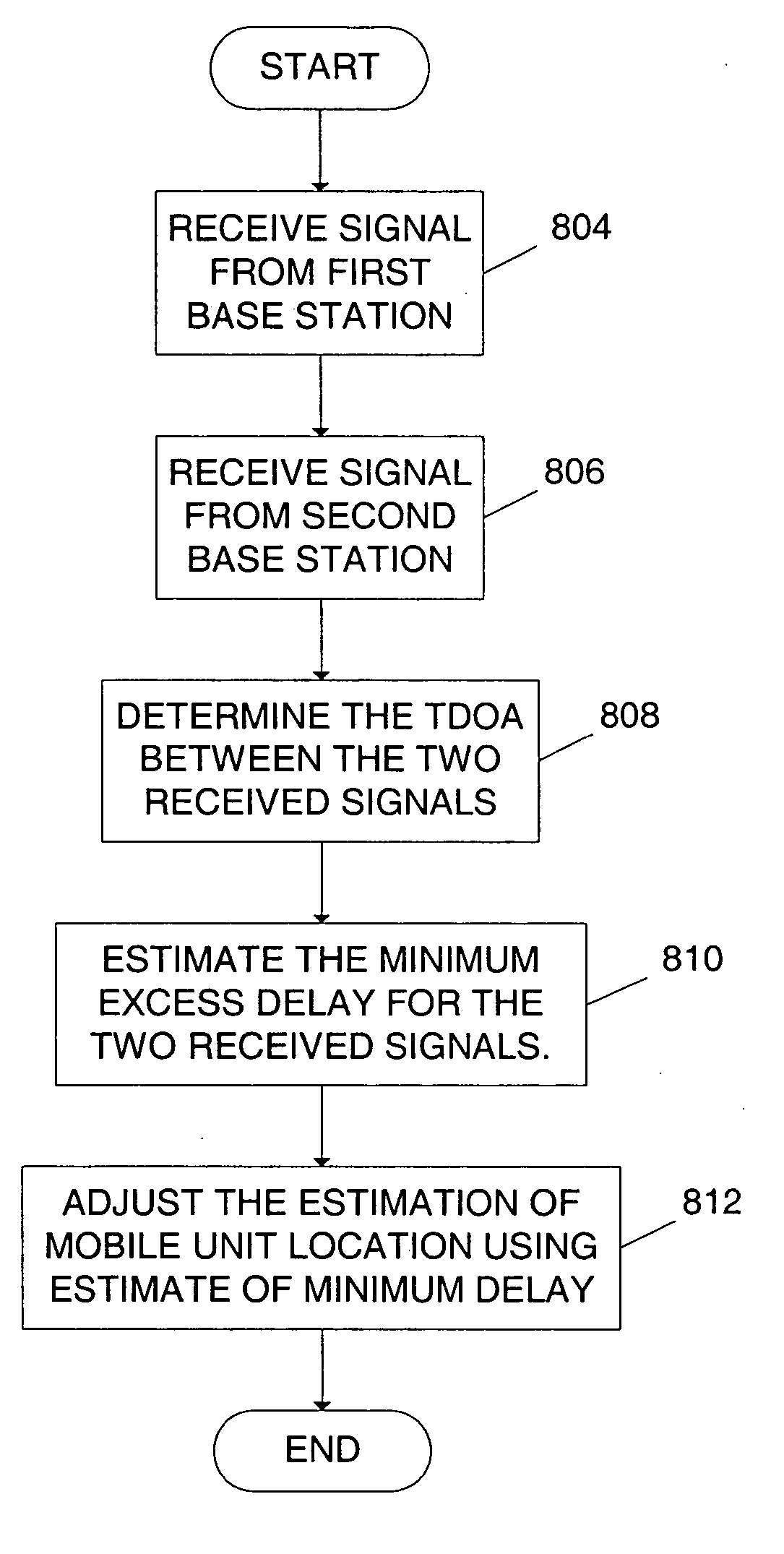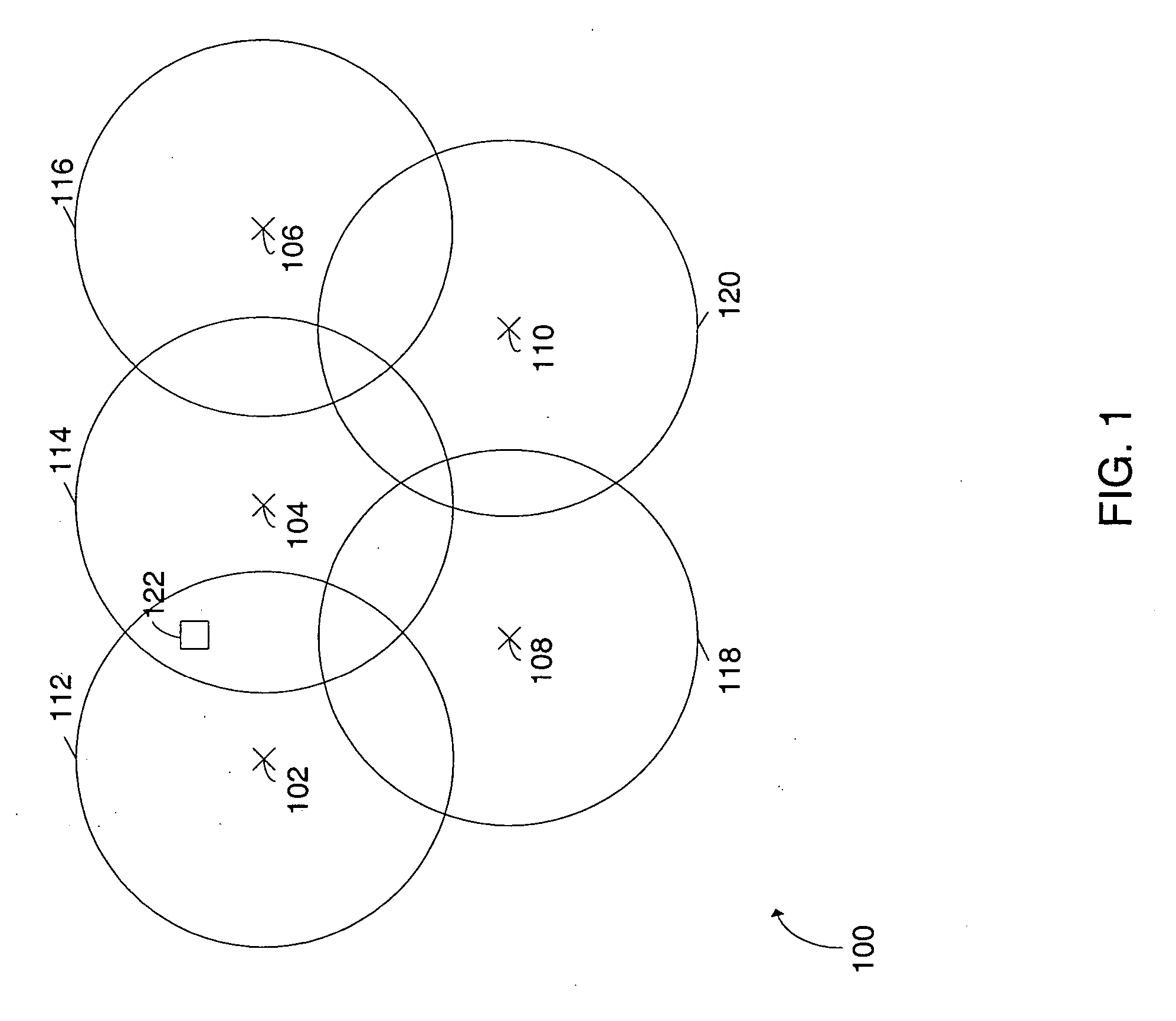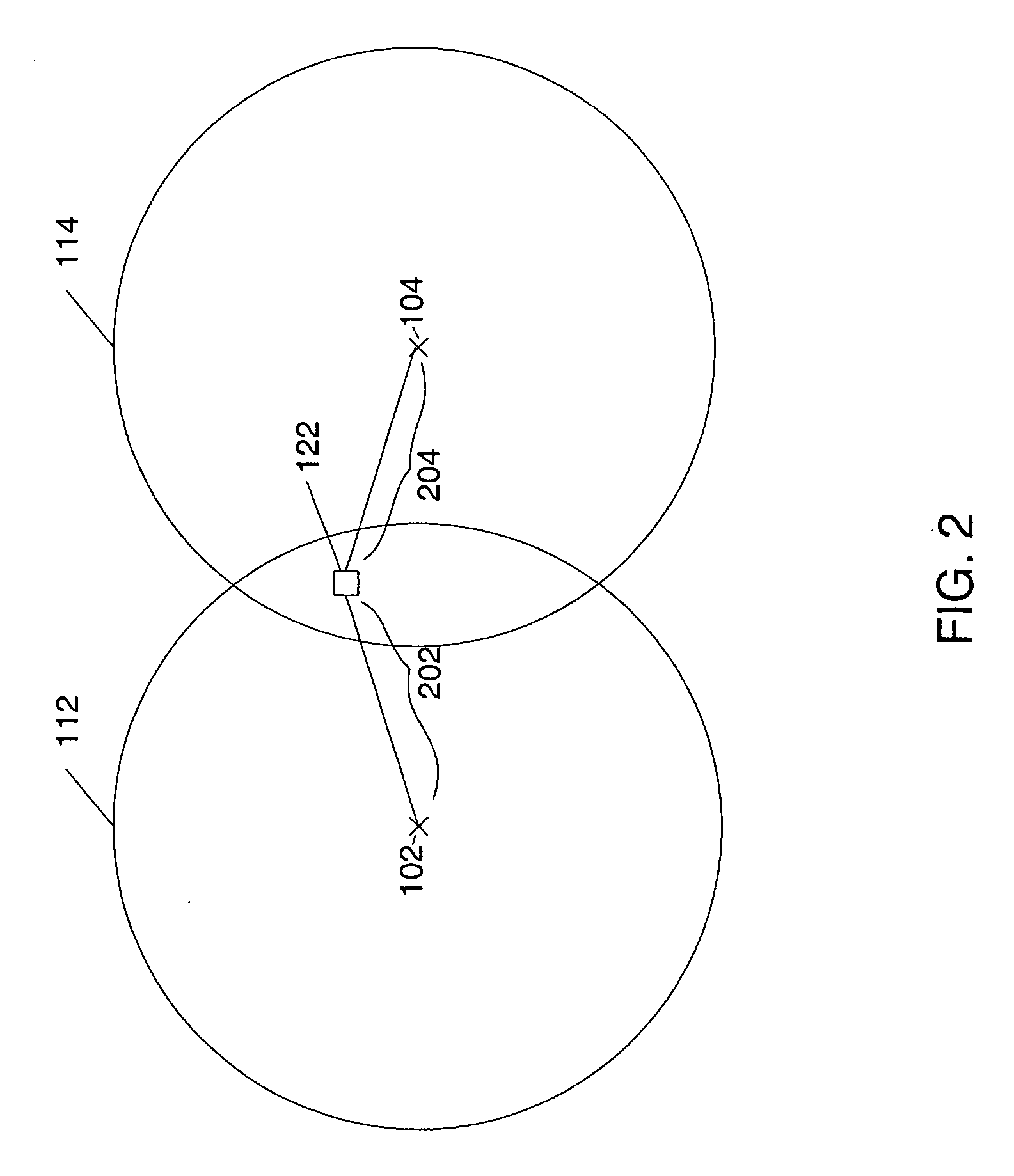Method and apparatus for detecting excess delay in a communication signal
a communication signal and excess delay technology, applied in the field of mobile unit estimation, can solve the problems of attenuation of signal, significant hindrance to the use of gps, and further exacerbated problems, and achieve the effect of improving the reliability of location estimation
- Summary
- Abstract
- Description
- Claims
- Application Information
AI Technical Summary
Benefits of technology
Problems solved by technology
Method used
Image
Examples
Embodiment Construction
[0030]FIG. 1 is a plan view of a portion of an exemplary cellular network 100 divided into a plurality of cells. Illustrated in FIG. 1 are five base stations 102, 104, 106, 108, and 110, and their respective cells, or coverage areas 112, 114, 116, 116, 118, and 120. As used herein a base station refers to any transmitter whose location is known at the time of transmission. For example, the base stations could include cell towers of a cellular network, satellites, or other wireless infrastructure.
[0031] The base station coverage areas in FIG. 1 indicate the area around the base station where the base station will support communication over the cellular network. While communication over the cellular network is supported within the coverage area, pilot signals transmitted from a base station may be detected by the remote unit at locations outside the coverage area of the base station, and be used in estimating the location of the mobile unit.
[0032] In FIG. 1, the base station coverag...
PUM
 Login to View More
Login to View More Abstract
Description
Claims
Application Information
 Login to View More
Login to View More - R&D
- Intellectual Property
- Life Sciences
- Materials
- Tech Scout
- Unparalleled Data Quality
- Higher Quality Content
- 60% Fewer Hallucinations
Browse by: Latest US Patents, China's latest patents, Technical Efficacy Thesaurus, Application Domain, Technology Topic, Popular Technical Reports.
© 2025 PatSnap. All rights reserved.Legal|Privacy policy|Modern Slavery Act Transparency Statement|Sitemap|About US| Contact US: help@patsnap.com



